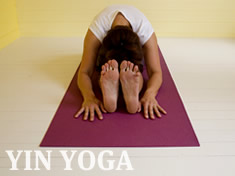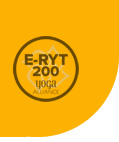Paul Grilley on Yin Yoga
What is Yin Yoga?
Yin Yoga is simply a wonderful experience and ideally is experienced rather than explained in words, however here an attempt to capture all that Yin is to me:
Yin has positive effects on our physiological, energetic, psychological, emotional, spiritual and mental wellbeing and helps balance our Yang lifestyles.
To practice Yin Yoga is to practice in a meditative, attentive, insightful, mindful and ‘quiet’ way, moving from outer to inner, where we retain openness in body mind and heart. Paul Grilley refers to Yin as ‘a quiet practice’ and Sarah Powers who coined the term ‘Yin Yoga’ calls it ‘insightful’ Yoga.
Yin Yoga is a practice that invites us to get intimate with the Self, with feelings, sensations, and emotions that arise. Yin can teach us to really listen. It can teach us to be still and simply ‘Be’, to come face to face with ourselves and accept any given moment as it is – this ability to ‘be in the moment’ greatly benefits us off the mat in our daily life.
Sometimes Yin Yoga is described as a practice ‘below the waist and above the knee’ as postures focus on the hips, sacrum and spine, though not exclusively.
Yin has also been likened to self-acupuncture because specific meridians (energy channels) are stimulated, enabling the free flow of chi (energy) in our body, leaving us feeling lifted and balanced.
Yin Yoga has many benefits, and these might include:
- Increased mobility and flexibility in hips, sacrum and spine
- Healthy connective tissue and joints
- Lowered stress levels
- Balanced and peaceful mind
- Deeper relaxation and improved mediation
- Balanced energy levels (chi)
- Slowed signs of ageing in joints
- Stimulated meridian pathways and increased chi flow
- Feeling calm and lifted
- Improved practice of Yang yoga
Yin Yoga Practice
Typically, there are three main aspects to a Yin Yoga practice:
- You come into the pose to your appropriate edge in a non-aggressive way, allowing breath to remain slow and stimulating sensations to be present without feeling overwhelmed or alarmed.
- You become still, muscularly unengaged but stretched, allowing gravity to ‘have you’ and mentally willing to surrender to the experience.
- You hold the pose for a while, listen within and observe what arises free of judgement, creating space for what is.
The long-held postures (3-5min) invite us to be muscularly unengaged and in doing so to we place more emphasis on the deeper connective tissue, the ligaments, the joints and the bones. Paul Grilley once described Yin as ‘stretching the bones’.
You will find less flexion and compression and more extension and lengthening in a Yin Yoga practice simply because the connective tissue (ligaments, tendons and fascia), unlike muscle fibre, is not elastic. CT is plastic and requires careful and prolonged traction to gently stretch and unwind, hence the long-held poses.
The CT is like a matrix that intersects and interconnects our whole body; our cells, organs, muscles, joints, bones. We gently stimulate these connections by stretching CT around our joints and when we come out of the pose the body’s repair response system sets in and the areas are flooded with fresh energy, blood, and nutrients and are lubricated and juiced up. Nurturing and healing occurs in our body.

What to expect in a Yin class?
Yin yoga is entirely floor based and variety of postures or shapes (asana) are practiced. There are less postures compared to an active Yang style Yoga class and while they bear resemblance they have different names and are held for longer durations (3-5 min typically).
Some asana you might practice in a Yin Yoga class: Butterfly / Happy baby / Swan / Caterpillar / Lying twists / Dragonfly / Sphinx and seal / Cat pulling its tail etc.
Every class will be different. A class might emphasises a particular organ-meridian pair relating to the season if year, or the focus might be the chakra system or around more philosophical or abstract ideas such as stillness, compassion, yamas & niyamas, gratitude, or mindfulness to name a few.
Who can practice Yin Yoga?
Classes are open to all levels of practitioner.
If you have specific health conditions (physical or mental), have had recent surgery, have injuries, are pregnant or recently gave birth – please contact me to discuss.
What to bring to a Yoga class?
Wear comfortable loose clothing, cotton or bamboo is recommended. Ensure you are warm enough, so layering is a good idea. You might also want to bring a scarf to cover eyes for relaxation and a bottle of water.


